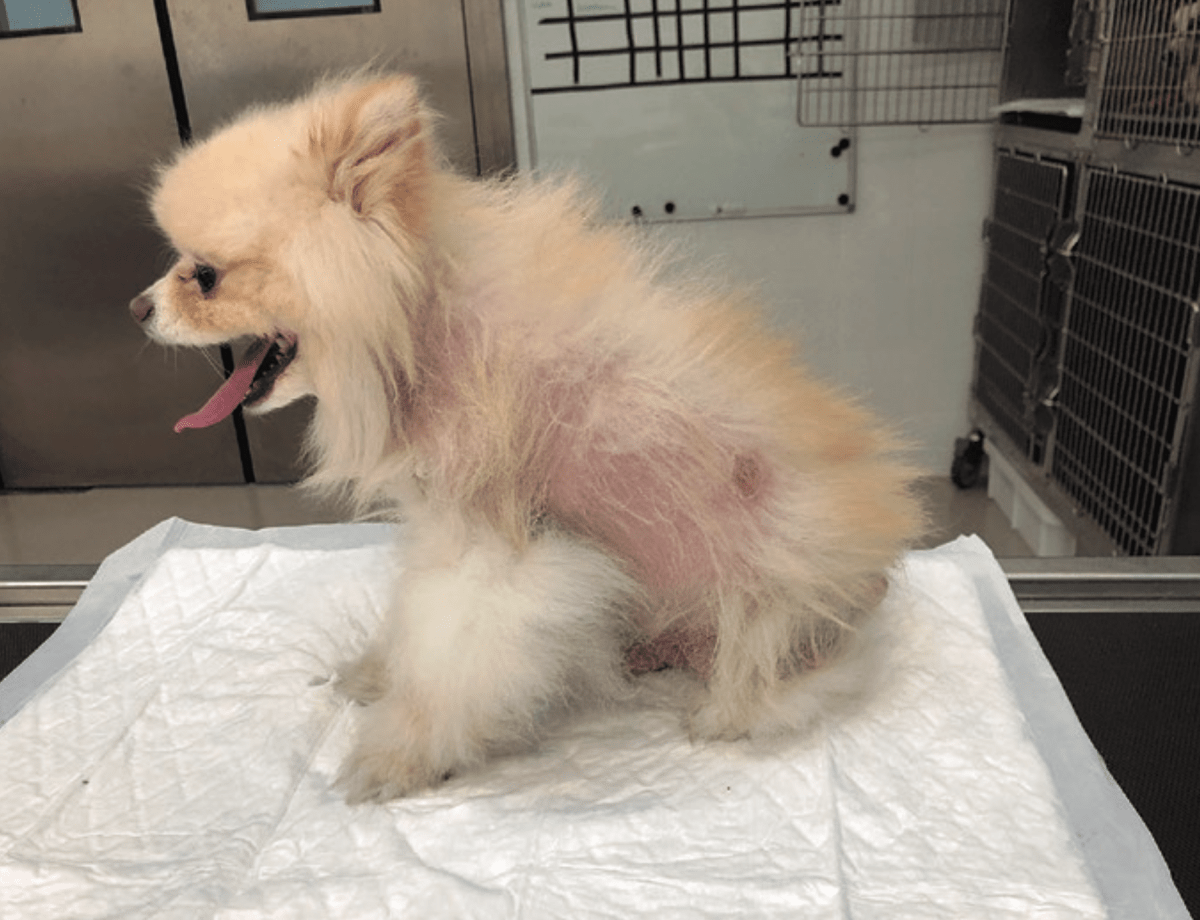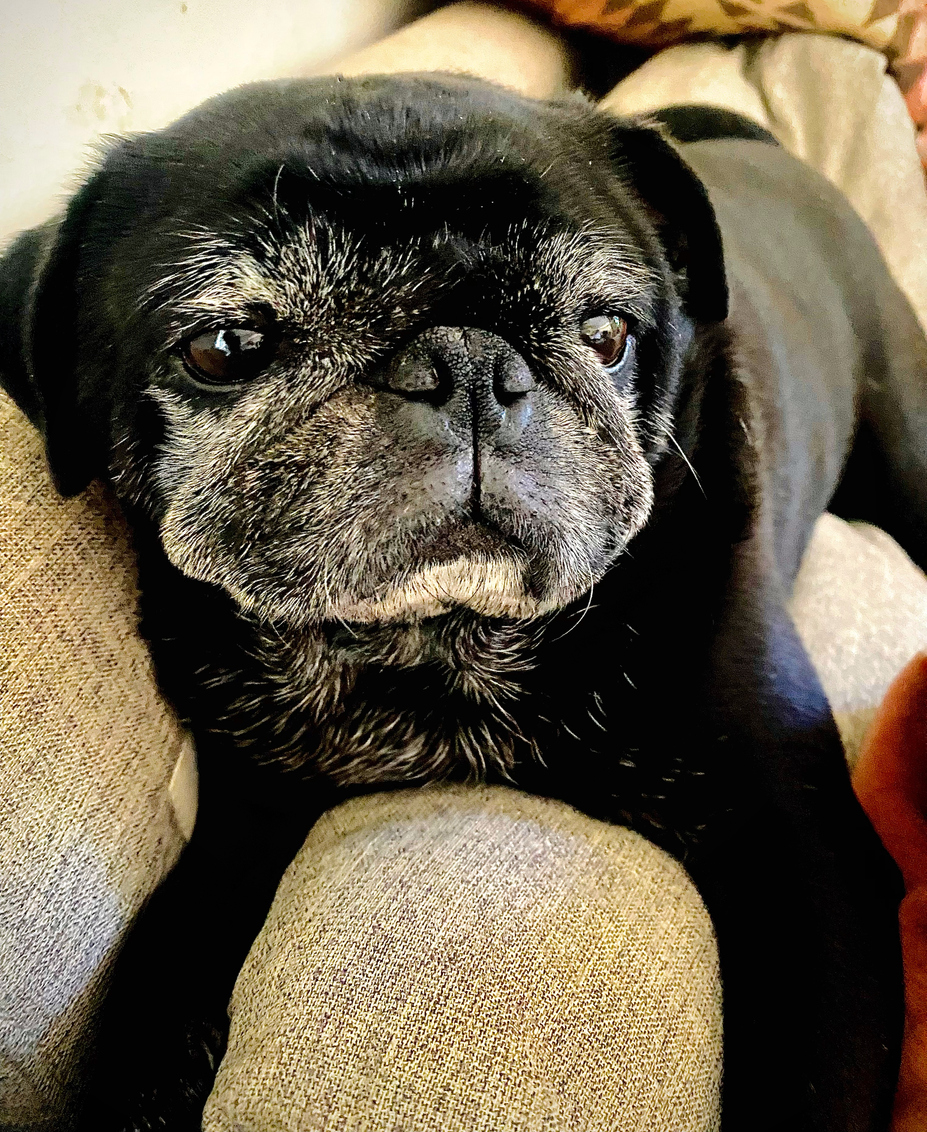Alopecia X
What is Alopecia X (Adrenal sex hormone imbalance)?
The cause of this hair loss condition in dogs is unclear but several theories have been proposed. One theory is that the disorder is caused by abnormal adrenal function. Others have suggested that it may be due to growth hormone deficiency.
The condition is uncommon in dogs with the highest incidence in adult dogs 2-5 years old, especially Pomeranians, Samoyeds, Alaskan malamutes, and miniature Poodles.
The gradual loss of primary hairs progresses to complete hair loss of the neck, tail, and hind region. It eventually becomes generalized over the trunk but the head and front limbs are spared. Hair loss is typically bilaterally and symmetrical. Remaining hairs epilate (peel) off easily and the areas of hair loss may become hyperpigmented, thin, and hypotonic. Secondary infection may occur but no systemic signs of illness is noted.

How do you diagnose Alopecia X?
History and general examination is the first step. A veterinarian may suspect the condition based on history, presentation, examination, and breed. Skin biopsy can be considered. Blood testing (specifically ACTH stimulation) may also further assist in diagnosis - although the clinical value of this test is limited as breed-specific normal values have not been established.
What treatment options exist?
Observation without treatment is reasonable because the condition is purely cosmetic and affected dogs are otherwise healthy. Neutering intact dogs may induce permanent or temporary hair growth.
A variety of medical therapies have also been used with inconsistent results. These may include the use of Melatonin, Trilostane or Mitotane.
Regardless of the therapy used, hair regrowth may be incomplete or transient. If initial hair growth is not seen within 3 months, a dose adjustment is recommended or alternative treatment should be considered.
The prognosis for hair regrowth is unpredictable. However, as the condition is cosmetic, pets are expected to live their normal life.
Can a luxating patella be corrected?
Surgery should be performed if your dog has recurrent or persistent lameness or if other knee injuries occur secondary to the luxating patella. Grade I patellar luxations are not usually surgically repaired, but Grades II-IV are. Surgical repair generally involves three steps:
- The point of attachment of the patellar ligament to the shin bone is transplanted (moved) to its proper location.
- The groove in the femur is deepened so the patella will stay in place.
- The capsule around the joint is tightened. When the patella luxates, the joint capsule stretches. Tightening it helps to prevent the patella from luxating again.
An implant may also placed on the inside of the knee, making the patella unable to slip over it. Post-operatively, the recovery period is usually very rapid, especially with appropriate pain management.

What is the prognosis?
If your veterinarian performs surgery before arthritis or other knee injury occurs, the prognosis is excellent. Your dog should regain full use of its leg. However, if arthritis has already developed in the knee joint, your dog may experience intermittent pain in the leg and the arthritis may progress. The higher the grade, of luxating patella, the higher the likelihood of reoccurrence postoperatively. Prescription anti-inflammatories, joint supplements, and/or special therapeutic joint diets may slow the progression of arthritis and help control any discomfort. Weight reduction is also recommended for pets that are overweight.
Consult with your veterinarian to determine the best post-operative plan for your pet.



